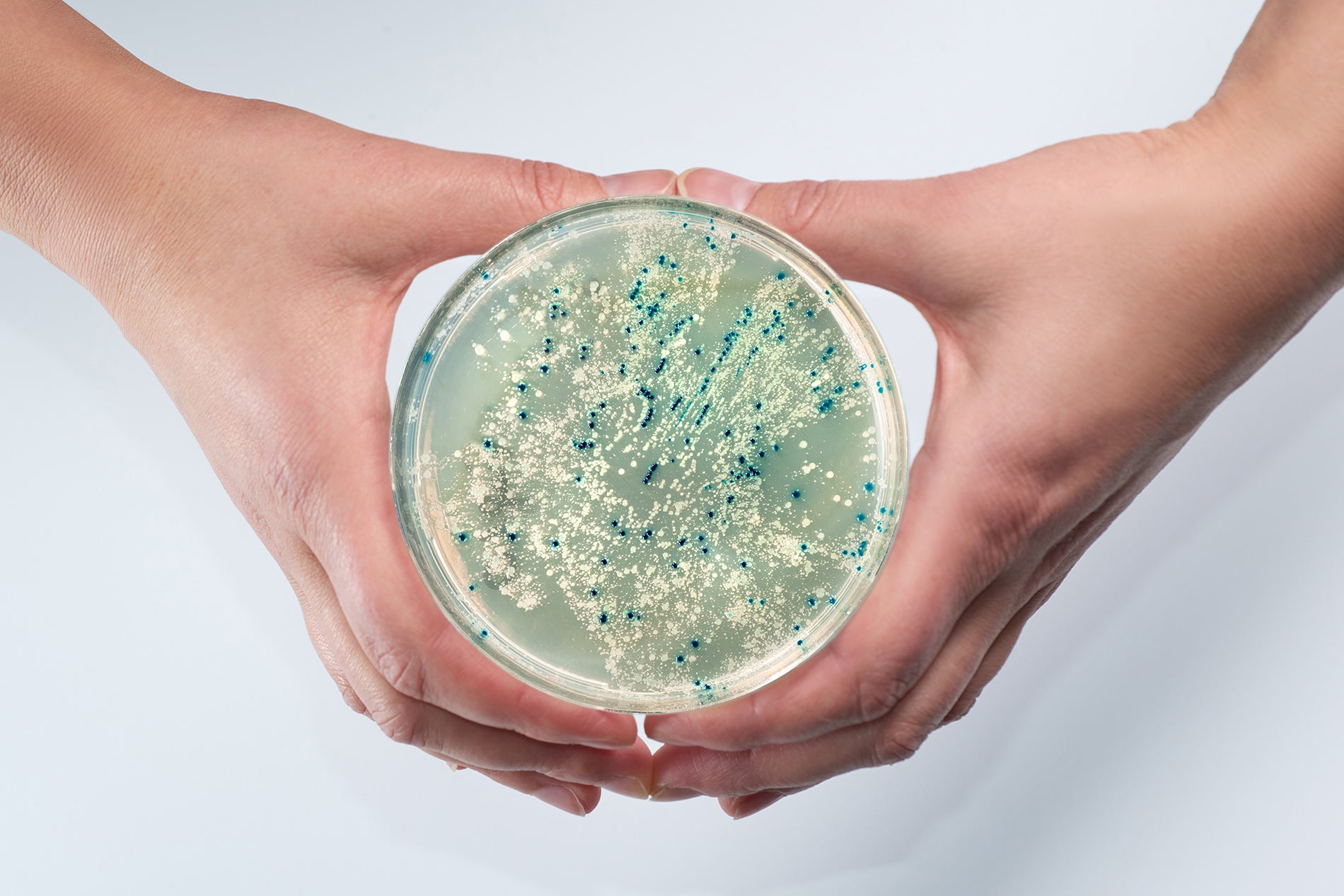
The Inhibition of Bacterial Growth by Hypochlorous Acid. Possible Role in the Bactericidal Activity of Phagocytes
Biochemical Journal
September 15, 1988
Abstract
The 'respiratory burst' of phagocytes such as neutrophils generates superoxide which forms H2O2 by dismutation. H2O2 and Cl- ions serve as substrates for the enzyme myeloperoxidase to generate hypochlorous acid (HOCl). HOCl is thought to play an important role in bacterial killing, but its mechanism of action is not well characterized. Furthermore, although many studies in vitro have shown HOCl to be a damaging oxidant with little or no specificity (particularly at high concentrations), bacteria which have been ingested by phagocytes appear to experience a rapid and selective inhibition of cell division. Bacterial membrane disruption, protein degradation, and inhibition of protein synthesis, do not seem to occur in the early phases of phagocyte action. We have now found that low concentrations of HOCl exert a rapid and selective inhibition of bacterial growth and cell division, which can be blocked by taurine or amino acids. Only 20 microM-HOCl was required for 50% inhibition of bacterial growth (5 x 10(8) Escherichia coli/ml), and 50 microM-HOCl completely inhibited cell division (colony formation). These effects were apparent within 5 min of HOCl exposure, and were not reversed by extensive washings. DNA synthesis (incorporation of [3H]-thymidine) was significantly affected by even a 1 min exposure to 50 microM-HOCl, and decreased by as much as 96% after 5 min. In contrast, bacterial membrane disruption and extensive protein degradation/fragmentation (release of acid-soluble counts from [3H]leucine-labelled cells) were not observed at concentrations below 5 mM-HOCl. Protein synthesis (incorporation of [3H]leucine) was only inhibited by 10-30% following 5 min exposure to 50 microM-HOCl, although longer exposure produced more marked reductions (80% after 30 min). Neutrophils deficient in myeloperoxidase cannot convert H2O2 to HOCl, yet can kill bacteria. We have found that H2O2 is only 6% as effective as HOCl in inhibiting E. coli growth and cell division (0.34 mM-H2O2 required for 50% inhibition of colony formation), and taurine or amino acids do not block this effect. Our results are consistent with a rapid and selective inhibition of bacterial cell division by HOCl in phagocytes. H2O2 may substitute for HOCl in myeloperoxidase deficiency, but by a different mechanism and at a greater metabolic cost.
Full Publication
September 15, 1988
Abstract
The 'respiratory burst' of phagocytes such as neutrophils generates superoxide which forms H2O2 by dismutation. H2O2 and Cl- ions serve as substrates for the enzyme myeloperoxidase to generate hypochlorous acid (HOCl). HOCl is thought to play an important role in bacterial killing, but its mechanism of action is not well characterized. Furthermore, although many studies in vitro have shown HOCl to be a damaging oxidant with little or no specificity (particularly at high concentrations), bacteria which have been ingested by phagocytes appear to experience a rapid and selective inhibition of cell division. Bacterial membrane disruption, protein degradation, and inhibition of protein synthesis, do not seem to occur in the early phases of phagocyte action. We have now found that low concentrations of HOCl exert a rapid and selective inhibition of bacterial growth and cell division, which can be blocked by taurine or amino acids. Only 20 microM-HOCl was required for 50% inhibition of bacterial growth (5 x 10(8) Escherichia coli/ml), and 50 microM-HOCl completely inhibited cell division (colony formation). These effects were apparent within 5 min of HOCl exposure, and were not reversed by extensive washings. DNA synthesis (incorporation of [3H]-thymidine) was significantly affected by even a 1 min exposure to 50 microM-HOCl, and decreased by as much as 96% after 5 min. In contrast, bacterial membrane disruption and extensive protein degradation/fragmentation (release of acid-soluble counts from [3H]leucine-labelled cells) were not observed at concentrations below 5 mM-HOCl. Protein synthesis (incorporation of [3H]leucine) was only inhibited by 10-30% following 5 min exposure to 50 microM-HOCl, although longer exposure produced more marked reductions (80% after 30 min). Neutrophils deficient in myeloperoxidase cannot convert H2O2 to HOCl, yet can kill bacteria. We have found that H2O2 is only 6% as effective as HOCl in inhibiting E. coli growth and cell division (0.34 mM-H2O2 required for 50% inhibition of colony formation), and taurine or amino acids do not block this effect. Our results are consistent with a rapid and selective inhibition of bacterial cell division by HOCl in phagocytes. H2O2 may substitute for HOCl in myeloperoxidase deficiency, but by a different mechanism and at a greater metabolic cost.
Full Publication


